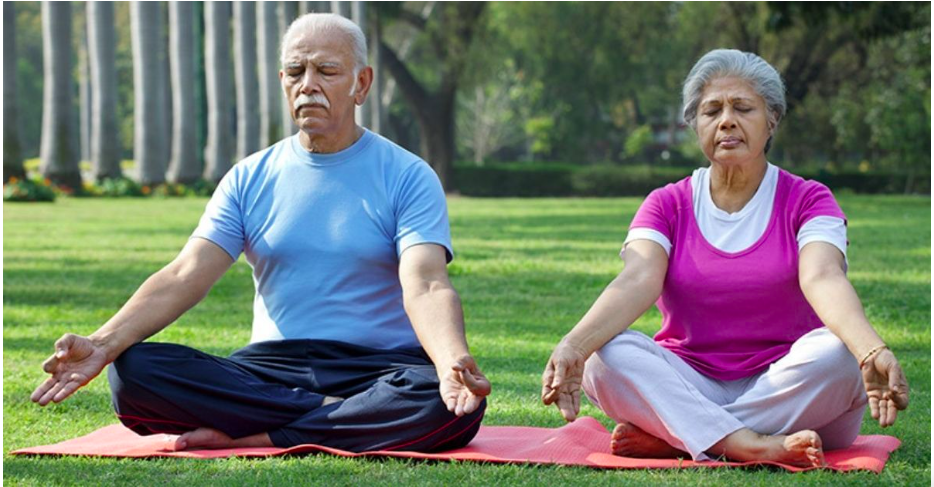Parenting
The Art of Mindful Activities for Children

The Art of Mindful Activities for Children
In today’s fast-paced world, where technology dominates our lives, it is more important than ever to teach children the value of mindfulness. Mindfulness is the practice of being fully present in the moment, aware of our thoughts and feelings without judgment. It has been proven to reduce stress, improve focus, and enhance overall well-being. But are there any specific mindful activities that are suitable for children?
The Benefits of Mindful Activities
Mindful activities offer a multitude of benefits for children. They help develop their emotional intelligence, improve their ability to regulate emotions, and enhance their self-awareness. By engaging in mindful activities, children learn to pay attention to their thoughts and feelings, which in turn helps them better understand themselves and their surroundings.
Furthermore, mindful activities can improve children’s concentration and attention span. In a world filled with distractions, teaching children to focus on the present moment can greatly benefit their academic performance and overall success in life.
Engaging Mindful Activities for Children
1. Mindful Breathing: Teach children to focus on their breath, taking slow and deep breaths in and out. Encourage them to notice the sensation of the breath entering and leaving their bodies. This simple activity can help calm their minds and promote relaxation.
2. Sensory Exploration: Engage children in activities that stimulate their senses, such as mindful eating or nature walks. Encourage them to pay attention to the taste, texture, and smell of the food they eat or the sights and sounds of the natural environment around them.
3. Body Scan: Guide children through a body scan meditation, where they focus their attention on different parts of their body, from head to toe. This activity helps them develop body awareness and release tension.
4. Gratitude Journal: Encourage children to keep a gratitude journal, where they write down things they are grateful for each day. This practice cultivates a positive mindset and helps children appreciate the small joys in life.
5. Mindful Movement: Engage children in activities that promote mindful movement, such as yoga or tai chi. These practices help children connect their minds and bodies, improving their balance, flexibility, and overall well-being.
FAQs about Mindful Activities for Children
How often should children engage in mindful activities?
The frequency of mindful activities can vary depending on the child’s age and individual needs. It is recommended to start with short sessions and gradually increase the duration as the child becomes more comfortable with the practice.
Can mindful activities replace traditional discipline methods?
Mindful activities should be seen as a complementary practice to traditional discipline methods. While they can help children regulate their emotions and make better choices, it is important to establish clear boundaries and consequences.
Are mindful activities suitable for children with attention deficit hyperactivity disorder (ADHD)?
Mindful activities can be beneficial for children with ADHD as they promote focus and self-regulation. However, it is recommended to consult with a healthcare professional for personalized guidance.
Can parents participate in mindful activities with their children?
Absolutely! Mindful activities can be a wonderful bonding experience for parents and children. By practicing together, parents can role model mindfulness and create a supportive environment for their children’s well-being.
How long does it take to see the benefits of mindful activities?
The benefits of mindful activities can vary from child to child. Some children may experience immediate benefits, while others may require more time to see noticeable changes. Consistency and patience are key.
Are there any specific mindful activities for teenagers?
Many of the mindful activities mentioned earlier can be adapted for teenagers. Additionally, practices like guided meditation, journaling, and mindful listening can be particularly beneficial for this age group.
Can mindful activities be integrated into school curriculums?
Absolutely! Mindful activities have gained recognition in the education field for their positive impact on students’ well-being and academic performance. Many schools have started incorporating mindfulness practices into their curriculums.
In conclusion,
introducing mindful activities into children’s lives can have a profound impact on their overall well-being. By teaching them to be present in the moment and cultivate self-awareness, we empower them with valuable life skills that will serve them throughout their lives. So let’s embrace the art of mindfulness and guide our children towards a brighter, more balanced future.
Parenting
My Baby’s Head is Hot but Hands and Feet Are Cold

Understanding Temperature Variations in Infants: My Baby’s Head is Hot but Hands and Feet Are Cold
As a parent, it’s natural to be concerned about your baby’s health and well-being. One common observation that can cause worry is when your baby’s head feels hot while their hands and feet remain cold.
In this article, we will explore the possible reasons behind this temperature variation and provide some insights to help you better understand your baby’s body.
Why Does My Baby’s Head Feel Hot?
It is important to note that a baby’s head is one of the primary areas for heat loss and heat regulation. The blood vessels near the surface of the scalp are more prominent in infants, which can make their heads feel warmer than other parts of their body.
Additionally, babies have a larger surface area-to-body weight ratio, which means that heat loss can occur more rapidly through their heads.
Possible Causes of Cold Hands and Feet
While a warm head is a normal occurrence, cold hands and feet can also be a common observation in infants.
Here are a few possible causes:
- Immature Circulatory System: Babies have developing circulatory systems, and it takes time for their blood vessels to fully regulate blood flow to their extremities. This can result in cooler hands and feet.
- Temperature Regulation: Infants may have difficulty regulating their body temperature, especially in colder environments. As a result, blood flow may be redirected to vital organs, leading to cooler hands and feet.
- Normal Variations: Just like adults, babies can have variations in their body temperature. It’s important to monitor your baby’s overall behavior and well-being rather than focusing solely on their hands and feet.
When to Seek Medical Advice
While temperature variations in infants are often normal, there are instances where medical attention may be required.
If your baby exhibits any of the following symptoms, it is advisable to consult a healthcare professional:
- Persistent fever
- Excessive fussiness or irritability
- Changes in feeding patterns
- Difficulty breathing
- Unusual lethargy or lack of responsiveness
Frequently Asked Questions
1. Is it normal for a baby’s head to feel hot?
Yes, a baby’s head can feel warm due to increased blood flow and heat loss through the scalp.
2. Why do my baby’s hands and feet feel cold?
Infants have developing circulatory systems, and their blood vessels may not fully regulate blood flow to their extremities, resulting in cooler hands and feet.
3. When should I be concerned about my baby’s temperature variations?
If your baby exhibits persistent fever, excessive fussiness, changes in feeding patterns, difficulty breathing, or unusual lethargy, it is advisable to seek medical advice.
4. How can I help regulate my baby’s body temperature?
Ensure that your baby is dressed appropriately for the ambient temperature, keeping them warm but not overheated. Avoid exposing them to extreme cold or heat.
5. Are temperature variations in infants a cause for concern?
In most cases, temperature variations in infants are normal. However, if you have any concerns or notice unusual symptoms, it is best to consult with a healthcare professional.
6. Can temperature variations in infants be a sign of illness?
While temperature variations alone may not indicate illness, they can sometimes accompany other symptoms. It is important to monitor your baby’s overall well-being and seek medical advice if you have any concerns.
7. How can I ensure my baby’s comfort during temperature variations?
Keep your baby’s room at a comfortable temperature, dress them in appropriate clothing, and provide extra layers or blankets when needed. Regularly check their body temperature by feeling their chest or back.
Conclusion
Understanding temperature variations in infants can help alleviate parental concerns. A warm head and cool hands and feet are often a normal part of a baby’s development.
However, it is essential to monitor your baby’s overall well-being and seek medical advice if you notice any concerning symptoms.
Remember, each baby is unique, and if you have any doubts or questions, it is always best to consult with a healthcare professional.
-

 Trending Stories1 year ago
Trending Stories1 year agoCDC: 1 in 4 Americans Still COVID-Free by End of 2022
-

 Health5 years ago
Health5 years agoMeghan Trainor Shares Motivational New Song ‘Blink’
-

 Health2 years ago
Health2 years agoHow Long Does Monkey Pox Last Before It Surfaces in the Body?
-

 Health2 years ago
Health2 years agoWhat Causes Swollen Body? Understanding Edema and its Triggers
-

 Health3 years ago
Health3 years agoNutrition and the Importance of a Fitness Program – 3 Things to Know
-

 Health3 years ago
Health3 years ago5 Weird Reasons Why Pimples Disappear After Marriage
-

 Health3 months ago
Health3 months agoHow Do Pawpaw Seeds Support Cardiovascular Health?
-

 Health2 years ago
Health2 years agoHealth Benefits Of Pawpaw Seed? 7 Things To Know









